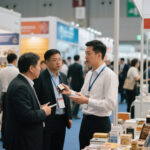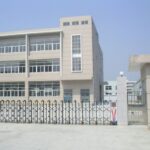In global trade, China has become a core market for global B2B sourcing due to its complete supply chain, rich product categories, and cost-effective advantages. However, many overseas buyers find in practice that apart from the explicit purchase price, hidden costs and unexplained delays often significantly reduce expected profits. This article will start from the root causes of hidden costs and delays, provide solutions based on practical experience, and explain how professional China product sourcing services can help enterprises avoid risks.
I. Hidden Costs in China B2B Sourcing: Those “Invisible Consumptions”
Hidden costs are like “boiling a frog in warm water”, which often accumulate gradually in the sourcing process and eventually become a key factor eroding profits. These costs do not come from the pricing of the products themselves but from process loopholes, information gaps, or decision-making mistakes.
1. Communication and Information Asymmetry Costs
Communication barriers between overseas buyers and Chinese suppliers are the most easily overlooked hidden costs. Demand transmission deviations caused by language differences and cooperation misunderstandings caused by business cultural differences may directly lead to “goods not meeting the requirements”. For example, a European buyer failed to clarify the specific standards of “environmental protection materials” when purchasing electronic components. After receiving the goods, they found that they did not meet the EU RoHS certification requirements and had to re-purchase, incurring additional costs of nearly 30%.
A professional China sourcing agent can solve this problem through a localized team. They are familiar with Chinese and English business terms, understand the differences in purchasing standards between China and foreign countries, and can serve as an intermediate bridge to accurately convey needs. For example, in ODM/OEM cooperation, agents can assist buyers in transforming vague “customization needs” into technical parameters that suppliers can implement, reducing communication costs from the source.
2. Quality Rework and Acceptance Costs
The trap of “low price and low quality” is often accompanied by hidden expenses. Some buyers choose informal suppliers to pursue low prices. Although the initial purchase price is low, the products may have problems such as process defects and substandard materials. A Southeast Asian furniture buyer once did not conduct pre-inspection, and the received solid wood tables and chairs had cracks. The total cost of rework and repair plus the loss caused by construction period delays was 20% higher than the quotation of high-quality suppliers.
This risk can be effectively avoided through product quality inspection services. Professional teams will check raw materials before production, follow up on processes during production, and conduct comprehensive inspections before delivery to ensure that products meet the agreed standards. Data shows that for sourcing projects with advance quality inspections, the rework rate can be reduced by more than 80%, and hidden costs can be reduced by 60%.
3. Logistics and Customs Clearance Surcharges
Hidden costs in the logistics link often appear in details: damage compensation due to goods packaging not meeting transportation standards, port detention fees due to incomplete customs declaration materials, expedited fees caused by improper choice of transportation methods, etc. For example, a U.S. buyer did not confirm the packaging weight-bearing standard when purchasing small mechanical parts. During transportation, the parts were scattered, resulting in a replenishment cost of 3,000 U.S. dollars and delaying the sales cycle.
It is crucial to choose an experienced logistics and shipping partner. Professional teams will design packaging schemes according to product characteristics (such as fragile goods and large goods), check customs declaration documents in advance, and choose the optimal transportation route in combination with the customs clearance requirements of the destination. For example, for the European market, China-Europe Railway Express can be used to reduce transportation costs, and EORI registration can be completed in advance to avoid customs clearance delays.
4. Supplier Management and Replacement Costs
Frequent supplier replacement is another source of hidden costs. Some buyers have to repeatedly look for new suppliers due to the lack of a long-term supplier screening mechanism, which often leads to unstable delivery dates and no after-sales guarantee in cooperation. Each replacement of suppliers requires investment in time costs (re-pricing, factory inspection), trial order costs (small-batch testing), and the cumulative expenditure is considerable in the long run.
A stable cooperative relationship can be established by screening suppliers through China product wholesale platforms or formal sourcing agents. For example, in the direct sourcing mode of Chinese factories, buyers can directly connect with the production source, understand the factory’s production capacity, qualifications, and production processes, and reduce intermediate links. At the same time, agents can assist in signing standardized cooperation agreements, clarifying terms such as delivery date, quality, and after-sales service, and reducing cooperation risks.
II. Core Causes of B2B Sourcing Delays: Full-Process Stuck Points from Order to Delivery
Delays not only affect sales plans but may also lead to a chain reaction such as customer loss and contract breach compensation. Delays in China’s B2B sourcing are mostly concentrated in three links: supplier screening, production follow-up, and logistics customs clearance.
1. Delays in Supplier Screening and Qualification Verification
Many buyers rely on informal channels (such as scattered wholesale markets and uncertified online platforms) when looking for suppliers, resulting in low screening efficiency. A South American buyer once spent 3 months contacting more than 10 manufacturers to find a suitable textile supplier. Finally, 3 of them had no export qualifications and 5 had insufficient production capacity, so they had to re-screen, directly delaying the peak season stock preparation.
The screening cycle can be shortened through professional China product sourcing services. Formal sourcing agents have a huge database of suppliers, covering high-quality manufacturers in various industries, and have completed qualification pre-audit (including export licenses, production certifications, past cooperation records, etc.). For example, in China product sourcing, agents can recommend 3-5 matching suppliers within 24 hours according to sourcing needs (such as category, production capacity, and certification requirements), and provide factory on-site inspection videos or reports (such as manufacturer information on the Chinese factory page) to greatly improve screening efficiency.
2. Delays Caused by Lack of Production Progress Follow-Up
The “black box operation” in the production link is the main cause of delays. Some suppliers do not arrange production according to the plan after receiving orders, or delay production due to raw material shortages, equipment failures, etc., but fail to inform the buyers in time, causing buyers to find problems only when the agreed delivery date is approaching. A Middle Eastern electronics buyer once encountered a supplier’s “false progress report”. The agreed delivery time was 45 days, but the actual production was only 30% completed, and finally missed the local electronics exhibition.
To solve this problem, it is necessary to establish a full-process production follow-up mechanism. Sourcing agents can arrange special personnel to be stationed in the factory or conduct regular inspections, feedback production progress weekly (including raw material arrival, production process completion rate, quality inspection results, etc.), and share production data simultaneously. For example, in product sourcing services, agents will provide visual reports of production progress, allowing buyers to grasp production dynamics in real-time and early warn of possible delay risks.
3. Uncontrollable Factors in Logistics and Customs Clearance Links
Logistics delays often stem from insufficient control over the transportation process: force majeure factors such as weather and port congestion, or customs clearance obstacles caused by incorrect customs declaration materials and non-compliant labels. An African buyer purchased daily necessities but failed to mark the English ingredient instructions on the packaging. The goods were detained at the destination port for 15 days, incurring high port detention fees and missing the local festival sales season.
A professional logistics team will avoid these risks in advance. Before shipment, they will check all customs clearance documents (such as commercial invoices, packing lists, certificates of origin) to ensure they meet the requirements of the destination; for sensitive categories (such as electronic products and cosmetics), confirm the import country access standards in advance; and formulate alternative transportation plans to quickly switch when the main route is blocked. For example, in the logistics and shipping service, the team will predict port congestion periods based on historical data, adjust the shipment time in advance, and reduce the delay probability by 40%.
III. Practical Strategies to Avoid Hidden Costs and Delays: Full-Link Optimization from Product Selection to Delivery
1. Establish a Standardized Sourcing Process
(1) Demand clarification stage: Transform sourcing needs into quantifiable standards, including product parameters (material, size, performance), certification requirements (such as CE, FDA), packaging specifications, delivery time nodes, etc. You can use customized services to let agents assist in sorting out the demand list to avoid vague expressions.
(2) Supplier selection stage: Give priority to connecting with suppliers through China product wholesale platforms or formal agents, and require them to provide business licenses, export licenses, past cooperation cases, and other materials. If necessary, conduct on-site factory inspections (can be entrusted to agents to complete and obtain Chinese factory inspection reports).
(3) Contract signing stage: Clarify quality standards, acceptance methods, delivery breach clauses, after-sales guarantees, and other contents. For example, stipulate that “delayed delivery will be compensated at 0.5% of the order amount per day” to force suppliers to pay attention to delivery dates; clarify that “unqualified quality inspection can be reworked unconditionally” to avoid quality disputes.
2. Introduce a Third-Party Supervision Mechanism
(1) Quality supervision: Introduce product quality inspection throughout the production cycle, including three nodes: pre-production (raw material inspection), in-production (process sampling inspection), and post-production (full inspection). The inspection report shall clearly mark qualified items and rectification items, and suppliers shall feed back rectification results within a specified time.
(2) Progress supervision: Require suppliers to submit weekly production schedules, and agents shall follow up regularly and synchronize them to buyers. For large orders, it can be stipulated in the contract that “payment progress is linked to production progress”, for example, “30% of the payment will be paid when 50% of the production is completed” to encourage suppliers to advance on time.
(3) Logistics supervision: Choose partners that provide full visual logistics services and check the location and transportation status of goods in real-time through the system. At the same time, confirm possible risk points with the logistics party in advance (such as customs clearance requirements at the destination port) and formulate response plans.
3. Choose a Professional China Sourcing Agent
A professional China sourcing agent can integrate resources and provide full-process services from demand connection, supplier screening to logistics and customs clearance, greatly reducing the risks of hidden costs and delays. Take Globalinkt as an example, its service content covers:
- Accurate matching: Screen suppliers from high-quality Chinese factories according to sourcing needs to ensure compliance with qualifications and matching production capacity;
- Full-process follow-up: In ODM/OEM cooperation, assist in controlling the whole process of design implementation, sample confirmation, and mass production;
- Risk control: Detect problems in advance and coordinate solutions through product quality inspection and progress supervision;
- Logistics optimization: Rely on logistics and shipping resources to provide optimal transportation schemes and reduce additional costs;
- Value-added services: Such as product photography (for buyers’ publicity), customized customs clearance documents, etc., to improve sourcing efficiency.
IV. Why Choose Globalinkt’s China Product Sourcing Services?
In the complex China B2B sourcing process, the value of a professional partner lies not only in “reducing costs” but also in “improving certainty”. As an import sourcing company deeply engaged in foreign trade sourcing, Globalinkt has become the first choice of many overseas buyers with the following advantages:
- Localized resources: It has a network of high-quality suppliers covering more than 30 industries and has established long-term cooperation with more than 500 Chinese factories, which can quickly match sourcing needs;
- Full-process control: Each link from demand analysis, supplier screening to logistics and shipping is managed by a dedicated person, and progress is synchronized in real-time through a digital system;
- Risk preparedness capability: For risks such as quality, delivery, and logistics, formulate response plans in advance. For example, sign emergency cooperation agreements with backup suppliers to ensure that orders are not affected by a single supplier;
- Customized services: Whether it is ODM/OEM brand customization or flexible sourcing for small-batch trial orders, it can provide adapted schemes (see customized service page for details).
Conclusion
The hidden costs and delays in China B2B sourcing are essentially the products of “information asymmetry” and “process out of control”. By establishing standardized processes, introducing third-party supervision, and choosing a professional China sourcing agent, enterprises can reduce hidden costs by 40%-60% and control the delay rate within 5%.
If you are worried about cost out of control or delivery delays in sourcing, you might as well start with a professional consultation. Click Contact Us, and Globalinkt’s sourcing consultants will provide customized solutions according to your needs to make China B2B sourcing more efficient and worry-free.










Leave a Reply